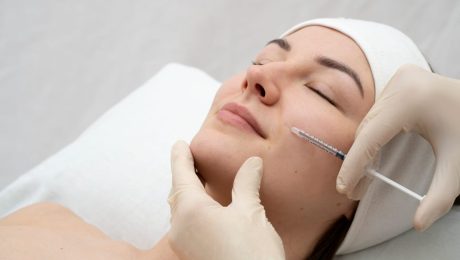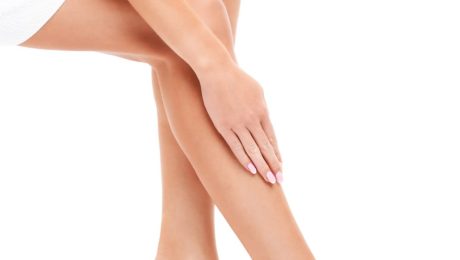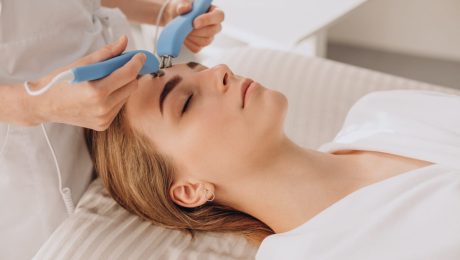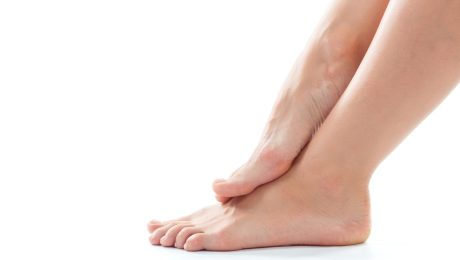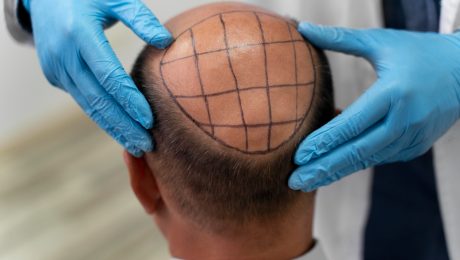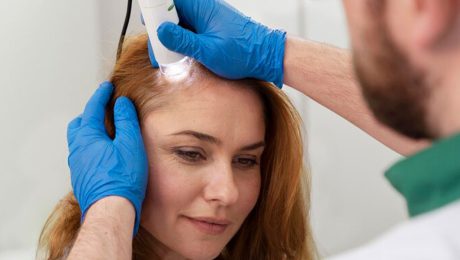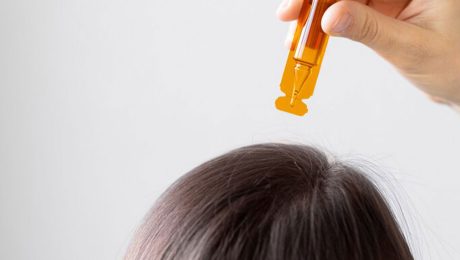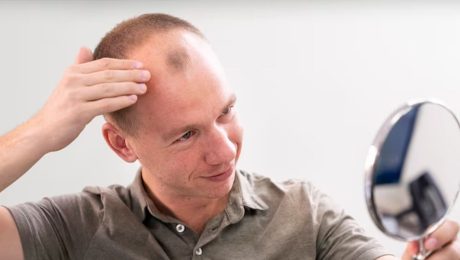What is Decollete Aesthetics? In Which Situations Is It Preferred?

What is Decollete Aesthetics? In Which Situations Is It Preferred?
What is Decollete Aesthetics?
Décolleté aesthetics includes surgical and non-surgical aesthetic procedures performed to improve the appearance of the décolleté area of the body. This area is located between the upper part of the breasts and the neck and may experience problems such as wrinkles, sagging and blemishes due to factors such as aging, sun damage or weight loss over time. Décolleté aesthetics is applied with different methods to eliminate these problems and achieve a younger, healthier appearance. It aims to increase the aesthetic appearance of the décolleté area by using techniques such as surgery, filling or laser treatment.
In Which Situations Is Decollete Aesthetics Preferred?
- Signs of Aging: Over time, the skin may lose its elasticity and sagging, wrinkles and fine lines may appear in the décolleté area. These conditions may cause people to turn to décolleté aesthetics to achieve a younger appearance.
- Sun Damage: As a result of exposure to sunlight, spots, discoloration and deterioration of skin texture may occur in the décolleté area. These aesthetic procedures are preferred to correct skin tone and repair damage.
- Weight Loss: After excessive weight loss, problems such as sagging and loosening can be seen in the décolleté area. In this case, it is aimed to tighten the skin with décolleté aesthetics.
- Postpartum Changes: Pregnancy and childbirth can cause skin changes in many women. Décolleté aesthetics may be preferred to correct such changes.
- Aesthetic Concerns: Some individuals may want to make their décolleté areas more attractive due to aesthetic concerns. This is a choice made to increase their self-confidence.
- Surgical and Non-Surgical Methods: Décolleté aesthetics can be applied with both surgical and non-surgical methods. Methods such as filling, laser and lifting are preferred to improve the appearance of the skin.
What Should Be Considered Before Having Decollete Aesthetics?
The most important thing to consider before undergoing decollete aesthetics is to choose the right doctor and a suitable method. Patients are advised to research the doctor’s experience and specialization. It is also important to clearly define the purpose of the procedure and clearly express expectations. Prior to the procedure, a detailed discussion with the doctor about the health status, existing diseases and medications should take place. It is also important to inquire about post-procedure recovery and care requirements. All these steps are critical for a successful décolleté aesthetic experience.
Which Methods Are Used For Decollete Aesthetics?
There are many different methods for decollete aesthetics. Surgical methods include lifting, fat transfer and liposuction. The rest of these methods are as follows.
- Filler Applications: By using fillers such as hyaluronic acid or fat grafting, volume loss in the décolleté area is eliminated and the skin gets a fuller appearance.
- Laser Treatment: Laser technology is used to remove blemishes, wrinkles and fine lines on the skin. Laser applications provide a younger appearance by increasing the collagen production of the skin.
- Chemical Peeling: Chemical peels exfoliate the top layer of the skin, encouraging the formation of new and healthy skin. This method is preferred to improve skin tone and achieve a smooth appearance.
- Radio Frequency Applications: Radio frequency technology increases tightening and restores skin elasticity by heating the tissues under the skin. This method is an effective option to prevent sagging.
- Ultrasound Applications: Ultrasound technology creates a lifting effect by acting on the deep tissues under the skin. This method has gained popularity as a non-surgical alternative.
How is Decollete Aesthetics Performed?
Decollete aesthetics vary according to the method applied. In surgical methods, sagging skin is tightened with fillers placed under the skin, fat transfer or lifting procedures. In non-surgical methods such as laser treatment, laser beams are used to increase collagen production in the skin and reduce surface blemishes. The procedure is usually performed under local anesthesia and the doctor chooses the most appropriate method according to the skin type and needs. After the procedure, the patient can return to their daily life immediately, but the healing process may vary from person to person.
How Long Does Decollete Aesthetics Take?
The duration of the décolleté aesthetic procedure varies depending on the method applied. Surgical procedures usually take between 1-3 hours, while laser or filler applications can be completed in a shorter time. The general health status of the patient, the techniques used during the procedure and the targeted results are other factors that affect the duration of the procedure. Considering the waiting time of patients after all procedures, the total time may vary.
When Can I Return to Daily Life After Decollete Aesthetics?
The time to return to daily life after décolleté aesthetics may vary depending on the method applied and the individual’s healing process. Generally, if a surgical procedure has been performed, it is recommended that patients wait 1 to 2 weeks to return to their normal activities. During this time, it is important to rest to allow swelling and bruising in the area to subside. Minimally invasive methods, such as fillers or laser applications, usually offer a shorter recovery period; in this case, most people can return to their normal life within a few days. However, each individual’s healing process is different. Therefore, it is important to pay attention to the doctor’s recommendations after the aesthetic procedure and to restrict physical activities within the specified period. In conclusion, although the return to daily life after decontouring varies depending on the type of procedure and the individual’s condition, with proper care and rest, the process usually proceeds quickly and smoothly.
What is the Recovery Process After Decollete Aesthetics?
The healing process after decollete aesthetics varies depending on the method applied and the skin structure of the individual. After surgical procedures, a significant improvement is usually seen within 1-2 weeks, while the healing process is faster in laser or filler applications. However, patients may need to pay attention for a certain period of time after the procedure. Swelling and bruising may occur after surgical procedures, so it is important to follow the doctor’s recommendations. The full recovery process can be completed within a few weeks.
What are the Prices of Decollete Aesthetics in Turkey?
The prices of décolleté aesthetics in Turkey vary depending on various factors. First of all, the most important factor determining the aesthetic method to be applied is the type of technique preferred. While surgical procedures usually have higher costs, non-surgical methods such as laser or fillers may be more affordable. In addition, the size of the area to be treated and the additional services required are among the factors that affect the pricing. The healing process and aftercare requirements can also increase the cost. Finally, personal needs and desired results are also an important factor in determining prices.
Frequently Asked Questions
Is It Necessary to Protect From The Sun After Decollete Aesthetics?
Are aesthetic procedures on the décolleté area harmful?
Can Wrinkles Be Completely Removed With Decollete Aesthetics?
Are Aesthetic Procedures Performed on the Decollete Area Painful?
Contact Us
For detailed information please contact us by filling out the form below.
- Published in General
What is J Plasma? What are the Advantages?

What is J Plasma? What are the Advantages?
What is J Plasma?
J Plasma is a state-of-the-art aesthetic procedure known as skin tightening and resurfacing. This method penetrates the lower layers of the skin using plasma energy. J Plasma increases the elasticity of the skin and stimulates collagen production. This significantly reduces signs of aging such as sagging, wrinkles and fine lines. The result is a younger and healthier appearance.
In Which Situations is J Plasma Used?
J Plasma is generally used in cases where sagging, wrinkles and fine lines are evident on the skin. In addition to signs of aging, it is also an effective solution for loose skin structure after weight loss. It also offers an ideal alternative for people who want their skin to gain a younger and healthier appearance. J Plasma can be preferred by anyone who needs skin renewal and tightening.
What are the Advantages of J Plasma?
One of the most important advantages of J Plasma is that it is a minimally invasive method. It provides skin tightening and renewal without surgical intervention. In addition, other advantages are as follows.
- Fast Recovery: After the procedure, patients can usually return to their daily activities within a few days, avoiding long recovery times.
- Lasting Results: J Plasma offers a long-term tightening and renewal effect by increasing collagen production in the skin, so the results achieved can be permanent.
- Low Risk of Side Effects: Thanks to the minimally invasive nature, side effects after J Plasma administration are usually minimal and most patients experience no problems other than mild discomfort.
- Versatility: It can be applied on a wide range of areas, from the face to the contours of the body, giving it the ability to respond to different aesthetic needs.
- Natural Appearance: J Plasma helps to achieve a natural and youthful appearance by increasing the elasticity of the skin.
- Short Procedure: The duration of the procedure is usually short and patients can return to their daily lives immediately after the procedure.
How Long Does the J Plasma Procedure Take?
The duration of the J Plasma procedure may vary depending on the size of the area to be treated and the condition of the skin. Generally, a facial procedure takes between 30 minutes and 1 hour, while for larger areas it can take between 1 and 2 hours. As long as there are no complications or additional procedures required, the J Plasma procedure can be completed fairly quickly.
How is the J Plasma Procedure Performed?
The J Plasma procedure is primarily performed by a specialized dermatologist or plastic surgeon. Before the procedure, the patient’s comfort is ensured by applying anesthesia to the target areas. Then, with the help of a special device, plasma energy is directed to the lower layers of the skin. This energy provides tightening and regeneration by heating the skin tissue. Since the procedure is usually performed in a minimally invasive way, the patients’ recovery process is faster.
What is the Recovery Process After J Plasma?
Recovery after J Plasma is usually quick and comfortable. There may be some mild swelling or redness after the procedure, but this usually subsides within a few days. Patients can return to their daily activities immediately after the procedure, but are advised to avoid excessive physical activity. Following the doctor’s recommendations will help the healing process go faster and smoother.
Which other treatment methods can be used with J Plasma Application?
J Plasma application is an effective treatment method used for skin tightening and rejuvenation. This procedure can be combined with other aesthetic applications to achieve more comprehensive results. For example, when used in combination with fillers and botox applications, it helps facial contours to become more defined and the skin to gain a smoother appearance. In addition, when applied in combination with liposuction procedures such as liposuction, body contours can become more defined. The use of J Plasma in such combinations makes it possible to achieve more effective and permanent results in both facial and body aesthetics.
What Side Effects May Occur After J Plasma?
Some side effects may occur after J Plasma application, but these effects are usually temporary and decrease over time. The most common side effects after the procedure include mild swelling, redness, and tenderness. These symptoms usually resolve spontaneously within a few days. In addition, some patients may experience crusting or flaking of the skin. This is part of the skin’s regeneration process and usually resolves within 1-2 weeks. However, in case of any unexpected side effects or discomfort, it is important to contact the specialist conducting the treatment.
How long after the J Plasma procedure can I see the results?
The results of J Plasma treatment may start to appear immediately after the procedure; however, it usually takes a few weeks for the final results to fully appear. While a slight tightening and brightening of the skin can be observed in the first days, it may take 3-6 weeks for the skin to fully heal and the desired appearance to appear. During this period, the natural regeneration process of the skin continues and a more pronounced tightening and rejuvenation is achieved over time. In addition, the permanence of the results may vary from person to person; therefore, it is important to pay attention to the recommendations of your specialist doctor after the application to achieve effective results.
What are the J Plasma Prices in Turkey?
J Plasma prices in Turkey vary depending on various factors. First of all, the choice of clinic or hospital where the procedure will be performed has a significant impact on prices. The level of expertise, the technology used and the quality of the equipment are other important factors that affect the costs. In addition, the size of the area to be treated, the condition of the skin and the desired results are also among the factors affecting pricing. The experience and expertise of the doctors in the clinics also play a decisive role on prices. All these factors shape the total cost of the J Plasma procedure and offer different options according to patients’ budgets.
Frequently Asked Questions
What are the Differences Between J Plasma and Other Aesthetic Procedures?
Contact Us
For detailed information please contact us by filling out the form below.
- Published in General
What is Crooked Leg Aesthetics? How Is It Performed?

What is Crooked Leg Aesthetics? How Is It Performed?
What is Crooked Leg Aesthetics?
Crooked leg aesthetics is a surgical intervention applied to correct deformations in the appearance of the legs. This procedure is designed to give the legs a symmetrical and aesthetic appearance. Crooked legs can often occur as a result of genetic factors, congenital disorders or traumas. This aesthetic operation is preferred to increase the self-confidence of individuals, correct gait and posture disorders and improve the overall perception of physical aesthetics. In addition, it is aimed to give the legs a smoother and more aesthetic form thanks to bowleg aesthetics.
What Should Be The Preparation Process Before Crooked Leg Surgery?
It is important for patients to comply with certain preparation processes before the crooked leg aesthetic surgery. First of all, the patient’s general health condition should be evaluated and necessary blood tests should be performed. It is recommended to stop smoking at least one week before the surgery, as smoking can negatively affect the healing process. In addition, the use of blood thinners should be discontinued and the diet should be reviewed. It is also important to clean the body to ensure a hygienic environment for the day of surgery. All these preparations are critical for the safety and success of the operation.
Who Is Suitable for Crooked Leg Aesthetics?
Crooked leg aesthetics is suitable for individuals who experience deformation or asymmetry in their legs, have aesthetic concerns and are uncomfortable with this situation. Generally, adults aged 18 and over are considered candidates for this operation. However, factors such as the general health status of the person, the degree of leg deformation and expectations are also evaluated. In addition, candidates for this procedure are expected to be individuals who accept the surgical intervention and are suitable for the recovery process. Since each individual’s situation is different, it is important for potential candidates to have a detailed discussion with a specialized surgeon to determine the most suitable option.
What is the Operation Process in Crooked Leg Aesthetics?
The bowleg aesthetic operation starts with a planning in line with the patient’s condition and expectations.
- Anesthesia Administration: When the day of surgery arrives, the patient will undergo the operation under general anesthesia. In this way, the patient will not feel any pain during the operation and the procedure will be performed in a completely comfortable environment.
- Incision and Correction: The surgeon makes incisions in the appropriate areas to correct the crookedness of the legs. These incisions are placed at strategic points on the inside or outside of the legs so that minimal scarring is left during the healing process. Necessary adjustments are made to correct the distorted leg structure.
- Bone and Tissue Correction: During surgery, the bone structure is also corrected if necessary. The surgeon can change the position of the bones or break them. Tissue arrangement and, if necessary, implant placement procedures are also performed.
- Closure and Stitching: After the procedure is completed, the surgeon sutures the incision sites. The sutures are applied in a fine way, taking into account aesthetic concerns. Thus, the appearance of postoperative scars is minimized.
- Recovery Process: After the surgery is completed, the patient is kept under observation for a few hours. They are then given detailed information about the recovery process before being discharged. Patients are advised to rest and avoid certain activities for a few days.
- Controls and Follow-up: Postoperative controls are performed at regular intervals. The surgeon tries to detect possible complications in advance by monitoring the healing process. This process is critical to maintain the patient’s leg health and achieve the best results.
How long does the Crooked Leg Surgery process take?
The crooked leg aesthetic surgery process usually varies between 1.5 and 3 hours. The duration of the surgery may vary depending on the type of procedure performed and the patient’s condition. The surgeon may use various techniques to correct the structural defect in the legs, so the duration may vary from patient to patient. The duration of hospitalization is also determined according to the patient’s condition after surgery. Patients are usually discharged on the same day or within a day.
What is the Recovery Process After Crooked Leg Aesthetics?
The recovery process after crooked leg aesthetics may vary from individual to individual, but generally consists of several stages. In the first few days, mild pain and discomfort may be felt; painkillers recommended by the doctor can be used during this process. During the first week of the healing process, patients are advised to rest their legs and avoid excessive physical activity. Usually, the stitches are removed within 1-2 weeks and patients can return to their daily activities. However, full recovery may take several weeks or even months. Following the surgeon’s recommendations and regular check-ups are important for a healthy recovery.
Which Techniques are Used in Crooked Leg Aesthetics?
- Below Knee Surgery: These are surgical interventions performed in the area below the knee to correct deformities in the lower part of the legs. Generally, bone and tissue structures in these areas are corrected.
- Above Knee Surgery: These are techniques used to correct disorders in the knee area. Here, the position and function of the knee can be reorganized.
- Bone Incision (Osteotomy): A technique in which bones are cut and repositioned to correct bowed legs. This procedure helps to align the legs properly.
- Soft Tissue Revision: These are interventions performed to correct the soft tissue structure in the legs. This procedure can affect skin, muscle and fat tissues.
- Liposuction: It is a procedure performed to remove excess fat accumulations in the legs. This method makes the legs look thinner.
- Prosthesis Applications: If necessary, special prostheses can be used to correct the shape of the legs. This is especially preferred in cases of large deformations.
- Combined Methods: These are the methods performed by using different techniques together. In this way, legs can be corrected more effectively.
What Are The Side Effects Of Crooked Leg Surgery?
Crooked leg aesthetic surgery may have some side effects. These include swelling, bruising, risk of infection and delayed wound healing. In addition, in rare cases, more serious complications such as nerve damage or loss of sensation in the leg may develop. Therefore, it is important that patients receive detailed information about all possible risks before surgery and follow the postoperative process carefully. The surgeon will explain to the patient what to look out for during the recovery process and how to minimize possible side effects.
What are the Prices for Crooked Leg Aesthetics in Turkey?
The prices of bowleg surgery in Turkey vary depending on several factors. First of all, the type and complexity of the surgery has a significant impact on the price. In addition, the experience and expertise of the selected surgeon, the techniques and equipment used are other factors that affect the costs. The choice of clinic or hospital, the location of the health institution and the quality of service it offers also play a decisive role on prices. Preoperative counseling and evaluation processes, necessary tests and examination fees are also among the factors that increase the total cost. In addition, post-operative care, recovery and possible follow-up appointments are other cost items to be considered. All these factors cause the prices determined for bowleg aesthetics to vary.
Frequently Asked Questions
What Other Aesthetic Procedures Can Be Performed With Crooked Leg Aesthetics?
When Can I Return to My Activities After Crooked Leg Surgery?
Can Crooked Leg Aesthetics be Performed in Different Age Groups?
Which Techniques are Used in Crooked Leg Aesthetics?
Contact Us
For detailed information please contact us by filling out the form below.
- Published in General
What is Dermabrasion? Who is it Suitable for?

What is Dermabrasion? Who is it Suitable for?
What is Dermabrasion?
Dermabrasion is a skin resurfacing procedure that renews the top layer of the skin with a controlled sanding technique. It is usually performed to treat problems such as acne scars, scars, sun damage and fine wrinkles. This procedure helps to make the skin look smoother and younger, while also providing a more even skin tone.
What Preparation Should I Make Before Dermabrasion?
The skin must be kept clean and any skin infection or irritation must be treated before the dermabrasion procedure. Your doctor may advise you to avoid sun exposure, certain medications and products that can irritate your skin before the procedure. Also, avoiding smoking for a few weeks before the procedure can speed up the healing process and reduce the risk of complications.
How is Dermabrasion Procedure Performed?
Dermabrasion is done using a rotating instrument to mechanically remove dead or damaged cells from the surface of the skin. This tool grinds the skin with a special blade or a fine brush. The procedure is usually performed under local anesthesia by a dermatologist or plastic surgeon. The depth of the application area and the intensity of the sanding is adjusted according to the skin type and the problem being treated.
Who is Dermabrasion Suitable for?
Dermabrasion is generally suitable for many people, regardless of skin tone and skin structure. For example
- People with acne scars: Especially those who suffer from deep and persistent acne scars can diminish the appearance of these scars with dermabrasion.
- People with scars: Superficial scars caused by trauma, surgery or other causes can be smoothed with dermabrasion.
- People with sun damage: Sun spots, signs of aging and fine lines can be reduced with dermabrasion.
- Those with uneven skin texture: For people with uneven skin surface or pigmentation disorders, dermabrasion can provide a more even skin tone and texture.
- Those with small fine wrinkles: This procedure can be especially effective for softening the appearance of fine lines around the eyes and mouth.
- Those who want general skin resurfacing: For people who want to achieve a fresher, brighter and younger skin appearance, dermabrasion can be preferred for skin renewal.
What are the Advantages of Dermabrasion?
Dermabrasion is an effective solution for many skin problems. It offers a more youthful and vibrant appearance by even skin tone, reducing acne scars and other superficial marks, lightening fine wrinkles and generally improving skin texture. The regeneration of the upper layers of the skin accelerates the cell turnover in the skin, resulting in healthier, fresher skin. This results in smoother and brighter skin.
What is the Recovery Process After Dermabrasion?
During the healing process after dermabrasion, it may take several weeks for the skin to heal. Immediately after the procedure, redness, swelling and mild crusting of the skin is seen. During the healing process, peeling and crusting is normal as the skin forms a new layer. It is important to keep the skin moisturized and protected from direct sunlight for the first few weeks. Full recovery time varies from person to person, but usually takes between 4 and 6 weeks.
How Should Skin Care Be After Dermabrasion?
Skin care after dermabrasion is extremely important. After the procedure, the skin becomes sensitive and scarred, so it requires a gentle approach.
- Keep your skin clean: The skin will be sensitive after the procedure, so cleanse gently with doctor-recommended gentle cleansers.
- Use moisturizer: Apply doctor-recommended soothing and moisturizing creams regularly to support the skin’s healing process and prevent dryness.
- Sun protection: Since the skin becomes very sensitive after the procedure, always use a broad-spectrum sunscreen with a high SPF and avoid direct sunlight.
- Do not pick the scabs: Avoid forcibly removing scabs that may form during the healing process. It is important to allow the skin’s natural healing process.
- Avoid make-up: Avoiding makeup until the skin is fully healed reduces the risk of infection and irritation.
- Give your skin a rest: Allow the skin to heal by avoiding harsh chemical products, peels or abrasive skin care treatments for a while.
- Follow the doctor’s instructions: By using all recommended medicines and care products as directed by your doctor, you minimize the risk of complications and speed up the healing process.
When Can Makeup Be Applied After Dermabrasion?
The time to wear makeup after dermabrasion may vary depending on the skin type and the healing process. Generally, it is recommended to avoid wearing make-up after the dermabrasion procedure, as the skin may be red, swollen and tender. During the first 5-7 days, it is important for the skin to go through a natural healing process. During this period, symptoms such as crusting and peeling may also be observed. After the skin has recovered from this period, it will be more appropriate to use light and water-based makeup products. However, it is useful to consult your dermatologist before applying makeup, as they can provide the most accurate information about the condition and healing process of your skin. It is important to remember that it may take several weeks for the skin to fully heal and regain its natural appearance, so it is important to be patient.
What are Dermabrasion Prices in Turkey?
Dermabrasion prices in Turkey vary depending on various factors. First of all, the experience of the specialist performing the procedure and the city where the clinic is located are among the important factors affecting the price. In addition, the size of the area to be treated, the degree of the skin problem and the number of sessions are other important factors that affect pricing. The technology, devices and the quality of the products used during the procedure are also among the factors that determine the cost. Factors such as personalized treatment planning and additional care services can also lead to price differences.
Frequently Asked Questions
How Many Sessions Does the Dermabrasion Procedure Require?
Contact Us
For detailed information please contact us by filling out the form below.
- Published in General
What is Ankle Thinning? How is it done?

What is Ankle Thinning? How is it done?
What is Ankle Thinning?
Ankle thinning is a cosmetic procedure that aims to achieve a more elegant and slender appearance by reducing fatty tissue in the ankle area or aesthetically improving the appearance in this area. Usually, people with thick or wide ankles opt for this type of procedure to create a slimmer silhouette. This procedure is performed not only for aesthetic concerns, but also to balance the appearance of the legs and feet.
What Should I Do Before Ankle Thinning?
Before the ankle thinning procedure, there are some things that patients should pay attention to. First of all, it is recommended not to smoke and reduce alcohol consumption at least one week before the procedure. It is also important to get information about the use of blood thinners according to the doctor’s recommendations. It is also helpful to arrange convenient transportation for the day of the operation and to come with a support person for post-operative care. All these preparations contribute to a healthier and smoother procedure.
What are the Benefits of Ankle Thinning?
Ankle thinning has many aesthetic and psychological benefits. Ankle thinning offers significant benefits in terms of both physical appearance and emotional satisfaction.
- Aesthetic Appearance: Ankle slimming improves the overall aesthetic profile of the legs by making the ankles look slimmer and sleeker. This makes individuals’ legs look longer and sleeker.
- Increased Self-Confidence: A better appearance increases the self-confidence of individuals. Aesthetically pleasing ankles help them feel more comfortable and confident in social settings.
- Better Proportion: Ankle slimming makes the legs look more balanced and proportionate. This improves overall body proportions and creates a more attractive silhouette.
- Clothing Options: Thin ankles allow for a better combination of various outfits. Especially in clothes such as skirts and dresses, a more aesthetic appearance is achieved.
- Reducing the Effects of Aging: Ankle thinning can reduce the appearance of some of the aesthetic changes that come with aging and give a more youthful appearance.
Who is a Suitable Candidate for Ankle Thinning?
Ankle thinning is generally suitable for healthy individuals. Candidates should be in good general health, have a certain body mass index and have realistic expectations. Also, suitable candidates for this procedure are those who have thick or wide ankles and want to aesthetically improve this area. However, this procedure may not be recommended for individuals with pregnancy, bleeding disorders or some chronic diseases. It is important to consult a specialist for suitability.
How is Ankle Thinning Procedure Performed?
Ankle thinning is usually performed by liposuction (fat removal). With this technique, under local anesthesia, excess fat tissue is removed through a small incision with the help of a special device. Before the procedure, the doctor prepares a suitable plan according to the patient’s needs. In some cases, in addition to fat removal, tissue tightening procedures can also be applied. After the surgery, certain care methods and protective clothing are recommended to speed up the patient’s recovery process.
How Long Does Ankle Thinning Surgery Take?
Ankle thinning surgery usually takes between 1-2 hours. The duration of the procedure may vary depending on the needs of the patient, the techniques to be applied and the experience of the doctor. The duration of hospitalization varies depending on the patient’s condition after surgery; some patients are discharged on the same day, while others may prefer to stay overnight for observation. Following the doctor’s recommendations will help the healing process to proceed in a healthy way.
What Techniques Are Used for Ankle Thinning?
There are various techniques available for ankle thinning. The most common methods:
- Liposuction (Fat Suction): It is the most preferred method. With this technique, excess fat tissue in the ankle area is suctioned through small incisions. As a minimally invasive procedure, it usually offers a quick recovery process.
- Surgical Excision: In some cases, it may be necessary to remove the skin along with the excess fat tissue. This method may be preferred to achieve a more pronounced thinning. The surgery may take longer and the recovery time is also longer.
- Tissue Tightening: It is a technique used to increase the elasticity of the skin, especially after liposuction. This procedure helps the ankle to look more aesthetic.
- Cold Lipolysis: It is a method that destroys fat cells by freezing. Since it is a non-invasive technique, it is applied without surgical intervention and the recovery time is quite short.
- Ultrasonic Liposuction: Breaks down fat cells using sound waves. This method offers a more precise procedure and has a lower risk of damaging the surrounding tissues.
When Can I Start Physical Activities After Ankle Thinning?
The time to return to physical activities after ankle thinning may vary depending on each individual’s recovery process. Generally, patients should rest and avoid heavy activities for the first few days after surgery. Light walking can usually begin within 1-2 weeks with the doctor’s approval. However, it is usually recommended to wait 4-6 weeks to return to intense sports activities or exercise programs. In any case, it is important to pay attention to your doctor’s recommendations, taking into account the individual recovery process.
What is the Recovery Process After Ankle Thinning?
The recovery process after ankle thinning is usually not uncomfortable for patients. Rest is recommended for the first few days, while light activities can be done in accordance with the surgeon’s instructions. Swelling and bruises are not unexpected and usually subside within a few weeks. The complete healing process varies between 4-6 weeks, during which time it is important to follow the doctor’s control and recommendations.
Ankle Thinning Surgery Price in Turkey
The price of ankle thinning in Turkey varies depending on various factors. The technique to be applied plays an important role; the costs of different methods such as liposuction may differ. Depending on the patient’s needs, additional procedures or tests that need to be performed beforehand can also increase the total cost. Furthermore, the patient’s general health and body structure can influence the surgeon’s decisions and therefore the prices. When all these factors are taken into consideration, ankle thinning prices are in a wide range
Frequently Asked Questions
Do I Need to Wear Protective Clothing After Ankle Thinning?
What are the Side Effects of Ankle Thinning Surgery?
Contact Us
For detailed information please contact us by filling out the form below.
- Published in General
Is There a Treatment for Hair Loss?

Is There a Treatment for Hair Loss?
Treatment of Hair Loss
The question of whether there is a treatment for hair loss can be answered as hair loss is a treatable disease. If you are faced with a hair loss situation that has gone beyond normal hair loss, you should see a doctor immediately. Your doctor will find out why hair loss occurs after the necessary examinations and will apply a treatment accordingly. Only genetic hair loss cannot be prevented. However, even in this case, hair loss can be slowed down with some methods. In other causes, hair loss ends when that cause is eliminated. For example, if you are experiencing hair loss due to hormonal imbalances, you will also get rid of the hair loss problem at the end of the treatment that will ensure your hormone balance. For this reason, the relevant treatment methods should be determined and applied by the doctor. If all these elements are provided and with your efforts, hair loss will end.
How to Treat Hair Loss?
The causes of hair loss can be categorized under two headings. Hair loss occurs according to genetic factors or non-genetic factors. Therefore, treatment methods are based on these two titles. Before asking whether there is a treatment for hair loss, it should be determined whether it is genetic or not. If it is genetic, no treatment is possible, but the severity and speed of hair loss can be reduced. Accordingly
- If balding occurs in genetic hair loss and hair loss has stopped, the definitive permanent solution is hair transplantation. Hair transplantation has been technically developed precisely for these cases. After hair transplantation, hair loss does not occur again because the donor area is selected from the area where the hair does not fall out or hardly falls out.
- In non-genetic hair loss, a treatment method is adopted according to the cause of hair loss. For example, if you are experiencing hair loss due to vitamin deficiency and this has been detected by a doctor, hair loss will end with vitamin levels returning to normal levels with vitamin supplements.
What is the Definitive Solution for Hair Loss?
A definitive solution can be produced as a treatment for hair loss. However, hair loss cannot be prevented in genetic factors. Therefore, when the time comes, sparse hair or baldness will occur. In this case, the definitive solution comes with hair transplantation. When full balding occurs, 3000 grafts of hair transplantation is required to eliminate this appearance as a minimum. Apart from this, the number of grafts can be increased for more dense appearances. It is useful to determine the correct number of grafts together with your doctor. On the other hand, since hair transplantation has certain techniques, you and your doctor should decide which technique is right for you. At this point, your technique research is of great importance. However, it is also important to do research on hair transplantation prices. The prices determined according to the number of grafts are different in each clinic. With clinical research, you can go through the process more consciously in terms of preference. With such factors, you can have a healthier hair transplant treatment and benefit yourself.
Contact Us
For detailed information please contact us by filling out the form below.
- Published in General
How Are Grafts Removed in Hair Transplantation?

How Are Grafts Removed in Hair Transplantation?
How is Gref in Hair Transplantation?
Graft harvesting, which means hair stem cells, is a very important procedure in hair transplantation. The procedure in question, which brings along the question of how the grafts are taken, requires professional application in a hospital environment by a team of experts in the field. As a first step, the stages that enable the decision on hair transplantation are as follows;
- Hair analysis with examination
- Performing the tests deemed appropriate for the individual’s condition
- Deciding on the hairstyle according to the face shape and other factors, drawing the front line and determining the hair transplantation area
Does the Fue Method Give Successful Results?
The FUE method stands out as a method that has been used safely for nearly 20 years and has been widely accepted in the world. The most appropriate technique will be determined by the specialist after evaluating some factors such as the structure of the scalp and the degree of openness in the scalp from the recently developed DHI and Sapphire techniques. It is very important to follow the specialist’s decisions regarding the technique and other steps for the procedure to be successful. The person who will resolve the question marks such as how to take grafts, how to perform hair transplantation, what to pay attention to during the process in the most accurate way is the specialist applied for the procedure. Therefore, it is of great importance to take steps by relying on expert opinions and instructions. The FUE method has a success rate of 97% as the most effective and successful method. However, if the expert is going through a different technique plan within the FUE method in this process, it is necessary not to insist on the requested technique in order to get successful results. Otherwise, the success of the process may be interrupted.
What to Pay Attention to During Hair Transplantation
There are some elements that should be taken care of and not neglected during the hair transplantation process. Especially following the necessary instructions after the procedure will be very beneficial for a comfortable process. After the procedure, it is essential to be protected from direct rain for a period of two weeks. In the first month, heavy sports should be avoided. If the procedure was performed in summer, direct sun exposure should be avoided for 2-3 months. Hair continues to grow for a period of one year. Therefore, showing patience and following the instructions to the letter contributes to the success of the process. A reliable specialist and an environment with sterile conditions are the most important elements at the very beginning of this whole process in order to avoid any risk of complications and to achieve the targeted result. If these steps are taken correctly, there is no obstacle for a much happier and more confident process by increasing the quality of life.
Contact Us
For detailed information please contact us by filling out the form below.
- Published in General
Which Vitamin to Take for Hair Loss?

Which Vitamin to Take for Hair Loss?
Which Vitamin to Take for Hair Loss?
Before answering the question of which vitamin should be taken for hair loss, you need to know which vitamin deficiency your hair loss is caused by. Your doctor will find this best as a result of the tests. Hair loss can be caused by iron deficiency as well as vitamins A, B12, C, D. You can take additional vitamin supplements according to the treatment method to be determined after detailed examinations. For this reason, you should take care not to go beyond what your doctor says in the relevant process and not to act according to yourself. The treatment will only be responsive in this way. Apart from this, you should take good care of your hair during the relevant treatment process and ask your doctor for additional advice when necessary. If balding has occurred, hair transplantation will be necessary. You can learn what you can do before and after hair transplantation from your doctor. In this way, the scope of treatment can be diversified much more widely.
Which Vitamin Deficiency Can Cause Hair Loss?
Underlying the question of which vitamins should be taken for hair loss is the question of which vitamin deficiency causes hair loss. When hair loss cases are examined, at least one of the iron deficiency conditions as well as vitamins A, B12, C, D is seen in patients. Hair loss caused by vitamin deficiency ends with the additional intake of these vitamins in the form of supplements. Other causes of hair loss are as follows;
- Hair loss can be caused by skin diseases.
- Hair loss can be caused by hormonal imbalances.
- Factors such as stress are effective on hair loss.
- Hair loss can also be caused by excessive use of chemicals such as hairspray, hairspray, briyantin, gel, etc.
- Apart from these, hair loss can also be based on genetic factors. In this case, hair transplantation is a definitive treatment method.
What are the Treatment Methods for Hair Loss?
When treating hair loss, the underlying causes should be thoroughly investigated. You can go to a full-fledged hospital and make an appointment with your doctor in the field of dermatology and ask for the relevant examinations to be performed. After the cause of hair loss is found, a treatment method will be adopted accordingly. In fact, while non-genetic factors are effective, when the underlying cause of hair loss is eliminated, hair loss also stops. However, lost hair can be regained with various treatment methods. In this case, it is also useful to mention genetic factors. For example, if there is balding in your family as a result of hair loss in people who are close relatives, your hair loss may be genetic. Especially according to the researches, this condition is taken from the mother’s side, that is, from the mother gene. You can also turn to your maternal relatives and observe them. Other than that, your doctor will give the most effective result. In other words, your doctor can decide whether hair loss is genetic or not. In such cases, early diagnosis and doctor control are very important. You should contact your doctor without losing time and ensure that the treatment process starts as soon as possible. Do not adopt and apply any treatment method on your own without a doctor’s control under the name of herbal treatment. This situation may involve various risks for your hair.
Contact Us
For detailed information please contact us by filling out the form below.
- Published in General
When Does Hair Loss Stop in Men?

When Does Hair Loss Stop in Men?
Hair Loss in Men
Many men are faced with the problem of hair loss. Especially this condition, called male pattern hair loss, lasts until a certain age. People who are faced with this situation are also curious about the answer to a question such as when hair loss stops in men. If there is no chronic cause under hair loss, hair loss slows down and comes to a halt in the 40s. Therefore, it would not be wrong to say that hair loss lasts until the 40s. Hair loss is the first cause of baldness. Hair loss can be based on genetic factors or it can also be caused by non-genetic factors. Therefore, people should know these factors and act accordingly. Hair transplantation is also performed in cases where hair loss occurs. Nevertheless, it is highly important to see a doctor and have a hair transplant with the advice of your doctor. Although hair transplantation has many benefits, it also has risks. However, these risks can be minimized by following your doctor’s recommendations and acting carefully. Risks can also be reduced by the professionalism of your doctor.
What Causes Hair Loss in Men?
There are some reasons for hair loss in men. These reasons can be listed as follows.
- Hair may fall out due to genetic factors.
- If you frequently use products such as hair spray, gel, etc., these products can also make your hair fall out. If you stop using these products, hair loss will stop.
- If you have hormonal imbalances, your hair may also fall out. Therefore, hair loss can stop as a result of hormonal treatment.
- Hair loss can also occur due to vitamin deficiency.
- Some skin diseases can cause hair loss. Treatment of these skin diseases will also result in hair loss.
Hair Loss Treatment
Hair loss treatment can be treated with hair transplantation if genetic factors are effective. In other words, in cases where hair loss is genetic, hair loss cannot be prevented, but the baldness problem can be corrected with hair transplantation. In the rest of the other reasons, hair loss stops if the factor causing hair loss is eliminated. Therefore, the elements necessary for treatment will also be realized. If you want to bring a permanent solution to hair loss treatment, you should choose hair transplantation. Because hair transplantation provides a situation where your hair will not fall out again as well as regaining your old hair. This provides you with a permanent gain in self-confidence and a beautiful appearance. If you want to get more information from this article about hair loss and if you have a complaint in this direction, you should definitely go to a doctor and get professional support. If you provide this, there will be no risk in hair transplantation.
Contact Us
For detailed information please contact us by filling out the form below.
- Published in General
How Many Sessions Is The Maximum Number Of Hair Transplantation Sessions?

How Many Sessions Is The Maximum Number Of Hair Transplantation Sessions?
Hair transplantation has become a popular solution for individuals experiencing hair loss. With advancements in techniques such as Follicular Unit Extraction (FUE) and Follicular Unit Transplantation (FUT), patients often wonder how many sessions they will need to achieve their desired results. This article will explore the factors that influence the number of hair transplant sessions and the maximum number of sessions typically required.
Factors Influencing the Number of Hair Transplant Sessions
The number of hair transplant sessions required can vary based on several factors:
- Extent of Hair Loss: The severity of hair loss plays a significant role. Individuals with advanced stages of hair loss may require more sessions to cover bald areas adequately.
- Donor Hair Availability: The amount and quality of hair in the donor area (usually the back and sides of the scalp) determine how much hair can be transplanted. Limited donor hair can mean the need for more sessions.
- Desired Density: Patients looking for higher hair density may require multiple sessions to achieve a natural look, especially if the initial density cannot be achieved in one session due to limitations in donor hair or the need to prevent scalp trauma.
- Hair Transplant Technique: Different techniques yield different numbers of grafts per session. FUT typically allows for more grafts to be transplanted in a single session compared to FUE. However, FUE is less invasive and might be preferred for patients who want smaller, less noticeable scars.
- Scalp Laxity and Health: The flexibility of the scalp (scalp laxity) and the overall health of the scalp can affect the number of grafts that can be transplanted safely in a single session.
- Patient’s Age and Future Hair Loss: Younger patients may experience progressive hair loss over time, which could necessitate additional sessions in the future to maintain a full appearance.
How Many Sessions Is The Maximum Number Of Hair Transplantation Sessions?
Technically, there is no strict maximum number of hair transplant sessions. If you are considering hair transplantation, discuss your expectations and concerns with your surgeon. They can provide insights into how many sessions you might need and create a realistic plan tailored to your unique circumstances. However, practical limitations include:
- Donor Area Depletion: If the donor area runs out of sufficient healthy hair follicles, it becomes impossible to continue with additional sessions.
- Scarring: Repeated sessions can lead to scarring in both the donor and recipient areas, which might limit further transplants.
- Patient Safety and Health: Surgeons must consider the overall health and safety of the patient, including factors like the risk of complications and the physical and emotional toll of multiple surgeries.
Typical Number of Sessions
- Single Session: Many patients achieve satisfactory results with a single session, especially when hair loss is not extensive, or if a moderate increase in density is desired.
- Two to Three Sessions: This is common for individuals with significant hair loss or those seeking high density. Sessions are usually spaced several months apart to allow healing and to assess the results of the previous transplant.
- More Than Three Sessions: In cases of extensive hair loss, limited donor supply, or specific patient goals, more than three sessions might be needed. However, this is less common and should be carefully planned with a hair transplant specialist.
Contact Us
For detailed information please contact us by filling out the form below.
- Published in General












